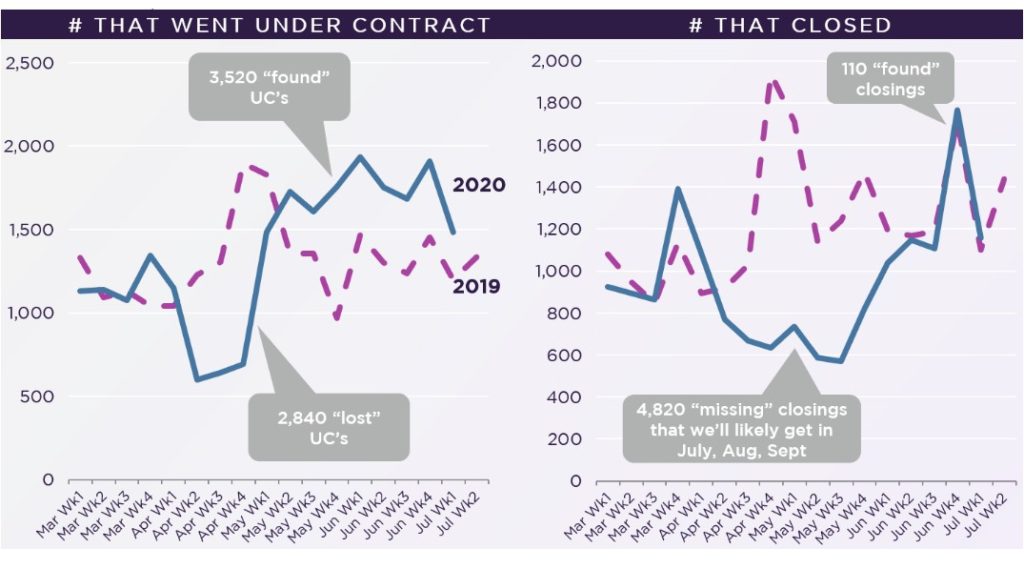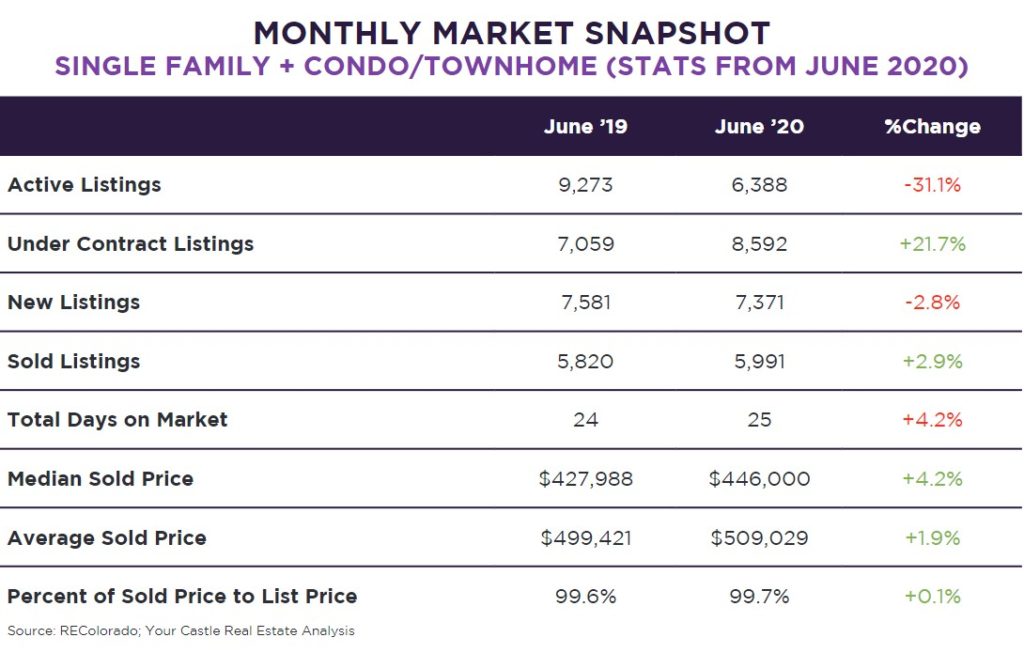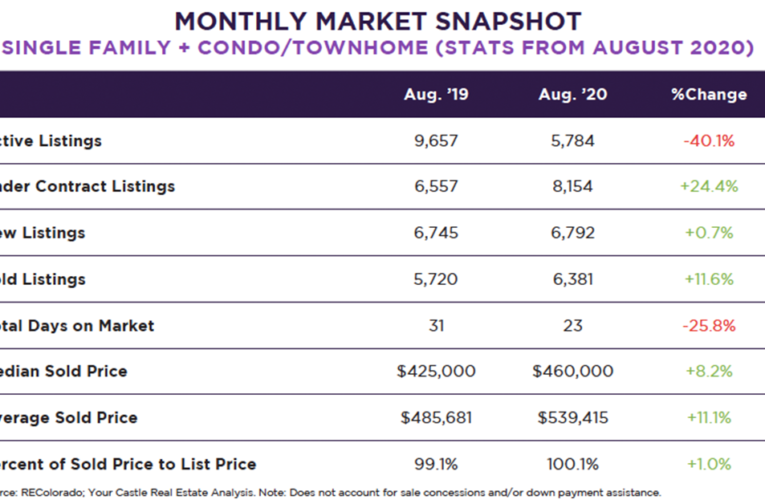THE LOST CONTRACTS, A RELATIVE RECOVERY
Benjamin Franklin once wrote, “Lost time is never found again”. A clever line considering it never ceases to be true. Many of us cannot recover the lost hours searching for necessities at grocery stores, the days spent in quarantine this spring, or the years shaved off many lives due to the virus itself. However, can the same be said of real estate? Can the home sales “lost” due to the pandemic ever be found again? The strength of the recovery will largely depend on your price point.
Despite a quick rebound in traffic once showings resumed post-shutdown, the Denver metro sold count was down around 24% year-over-year between March and June. For this same period there were 4,820 fewer closings than back in 2019. The silver lining is more contracts have been written up since showings resumed than the same timeframe last year. This suggests the market will continue to make up at least some of the lost sales from the spring as these contracts finalize.
One might think these recovered home sales would be spread out evenly between all price points since the pandemic is affecting everyone, but when looking at the data there is a clear divide. Of these new contracts, only around 49% of them fall into the $0-300K and $300-500K price segments, despite these segments having made up around 67% of the overall market share back in 2019. What does this mean for the market? The bottom line is entry level home sales are not recovering as strongly as homes priced between $500-900K.

ENTRY LEVEL HOMES — TOUGH TIMES AND LOW INVENTORY
The sad truth of the matter is this health crisis has disproportionately impacted entry level buyers. Since entry level workers (especially those without a college degree) bore the brunt of Covid layoffs, it is not surprising that entry level homes are recovering slower than their more expensive counterparts. To make matters worse, inventory is still at historic lows relative to the past 40 years. Developers have not been as active in 2020. Strong demand for affordable housing has not gone anywhere. Further compounding these issues, every level of government is bound to have budget shortfalls due to Covid which will set back affordable housing measures. For entry level buyers lucky enough to have held their current jobs through the crisis and be in the market for a new home it is highly competitive. By choosing a great agent, acting quickly, writing strong offers, and giving sellers plenty of leeway there are still homes to be found if you are patient. Historically, late summer and fall in election years tend to be more buyer friendly.
MID-RANGE HOMES — HOMES PRICED $500-900K LEAD THE RECOVERY
The flip side of the coin is quite a different story. The $500-900K price point is leading the recovery of the local real estate market. This price segment managed to recover better than any other, with around 43% of the recovered contracts falling into this price point despite making up only 27% of the overall market share back in 2019. This trend is largely driven by a continuing surge of demand for lower priced homes, coupled with a greater variety of higher-priced inventory. More and more trade-up buyers are cashing in on the equity they have been sitting on and using it to fund upgraded home purchases. For many trade-up buyers, recent events have been a boon to their home buying goals. The record low interest rates are providing lots of buying power!
LUXURY HOMES — THEY ARE JUST THAT, A LUXURY
Homes from $900K and up have been slower to recover than the next lowest price segments. These homes tend to sit on the market longer since there is a smaller customer base who can afford them. During recession years, any luxury product tends to suffer since everyone tightens their belts. The bottom line is that people do not need to move into a $900K+ home, they want to. Many buyers who would have fallen into this higher price range are content to wait out the pandemic or settle for a slightly less expensive home that still fits their needs. Considering recent uncertainty in the stock market and a typically more volatile market during election years, many of these buyers are content to wait out the pandemic until things are calmer.








